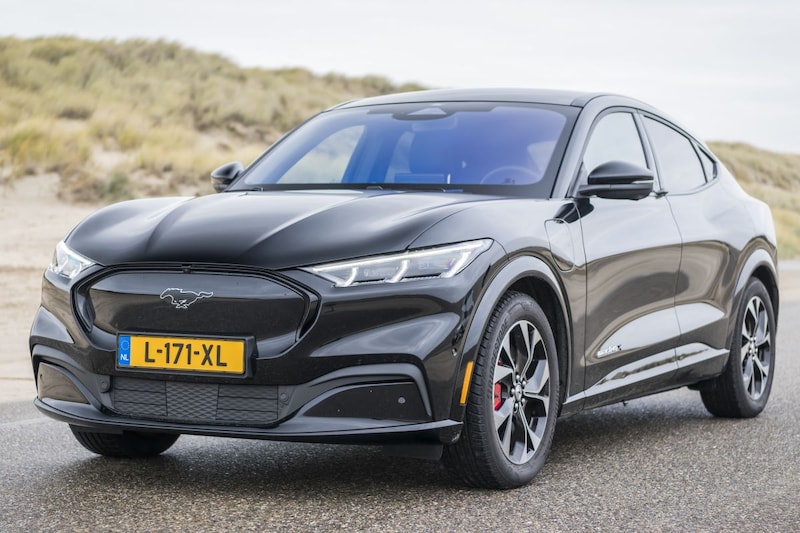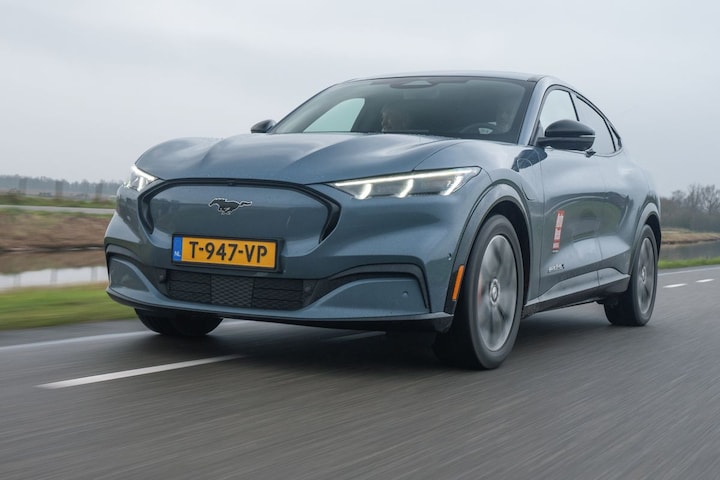‘A range of 300-320 km in winter is usually feasible’

The Ford Mustang Mach-e is quite a statement. The iconic name on a brand new, fully electric product is not popular with all enthusiasts. It probably won’t hurt Ford, because this Mach-e is higher in the sales charts in our country than any Mustang ever. Moreover, we are not here for a historical discussion, but we want to know how far such a plug-in Mustang will go in practice.
Ford supplies the Mustang Mach-e in different variants. The entry-level versions have a gross 75 kWh (net 72.6 kWh) battery pack. The more powerful variants and Extended Range versions produce up to 98 kWh (91 gross). The Mach-e is currently part of our own endurance test fleet, but we also gained extensive experience with the model before that. In this article we combine our own test data with that of users.
That’s how far you can get with 75 kWh
We start with the version with the smallest battery pack. We showed this in a test against the Skoda Enyaq Coupé. The four-wheel drive Mach-e consumed an average of 22.1 kWh per 100 kilometers, which gives the fast calculator a range of 329 kilometers. Another AWD driver narrowly falls below that with an average of 21 kWh/100 km, increasing his driving range to 349 kilometers. Please note: this is under winter conditions. “A range of 300 to 320 kilometers in winter is usually feasible,” he writes. “Then I usually drive 115 km/h on the highway. Above 120 km/h things deteriorate rapidly.”
Rear-wheel drive variants seem a bit more economical. The most favorable value, after 20,000 kilometers, especially in summer, is 16 kWh/100 km. “In practice, this is 275 to 300 kilometers in winter, 300 to 350 kilometers in spring or autumn and 400 to 450 kilometers in summer,” reports the responsible driver. “As far as I am concerned, excellent values.” Another RWD driver also thinks so. “At temperatures around freezing I still get 18 kWh per 100 kilometers for a commute of 31 kilometers, with eighty percent highway. That’s not bad.” On average we arrive at a consumption of 19.3 kWh/100 km for the 75 kWh versions, which includes a range of 376 kilometers.

The Ford Mustang Mach-e is currently in the endurance test garage as a rear-wheel drive car with a 98 kWh battery. With the temperatures of January and so far in February, we are above 20 kWh per 100 kilometers.
The Mach-e 98kWh does this
In our tests we mainly used the Mustang Mach-e with a large battery pack. The variant with rear-wheel drive achieves a neat 19 kWh per 100 kilometers and is therefore comparable to the Volvo C40. The large battery pack gives the Ford an advantage: a range of 479 kilometers. In an older test against the Hyundai Ioniq 5, the Mustang appears to be less economical and we still record 21.2 kWh/100 km. It seems that Ford’s claim that the car should be more economical after a number of adjustments is correct. A driver who still has an ‘old’ copy comes close to our consumption and scores 21.5 kWh/100 km. “With temperatures around freezing point, I achieve 360 to 380 kilometers and I drive fairly briskly,” is his explanation of this value.
The top model is the 487 hp Mustang Mach-e GT, which has a relatively modest increase in fuel consumption. In our double test against the Tesla Model Y Performance, it recorded an average of 21.9 kWh/100 kilometers, which gives a range of 416 kilometers. On average, the 98 kWh versions consume 20.9 kWh/100 km, which in practice should allow you to drive a maximum of 437 kilometers.
– Thanks for information from Autoweek.nl